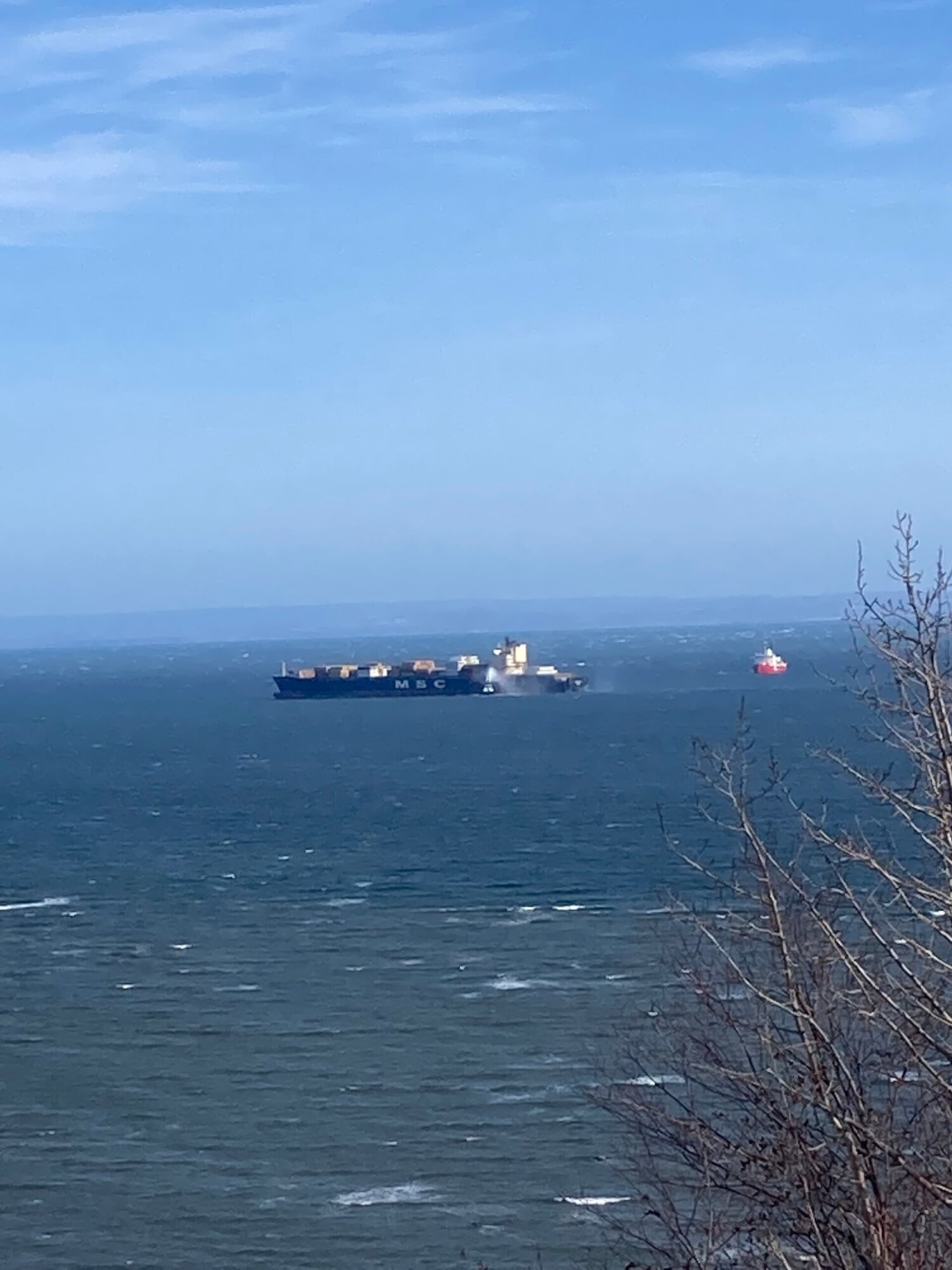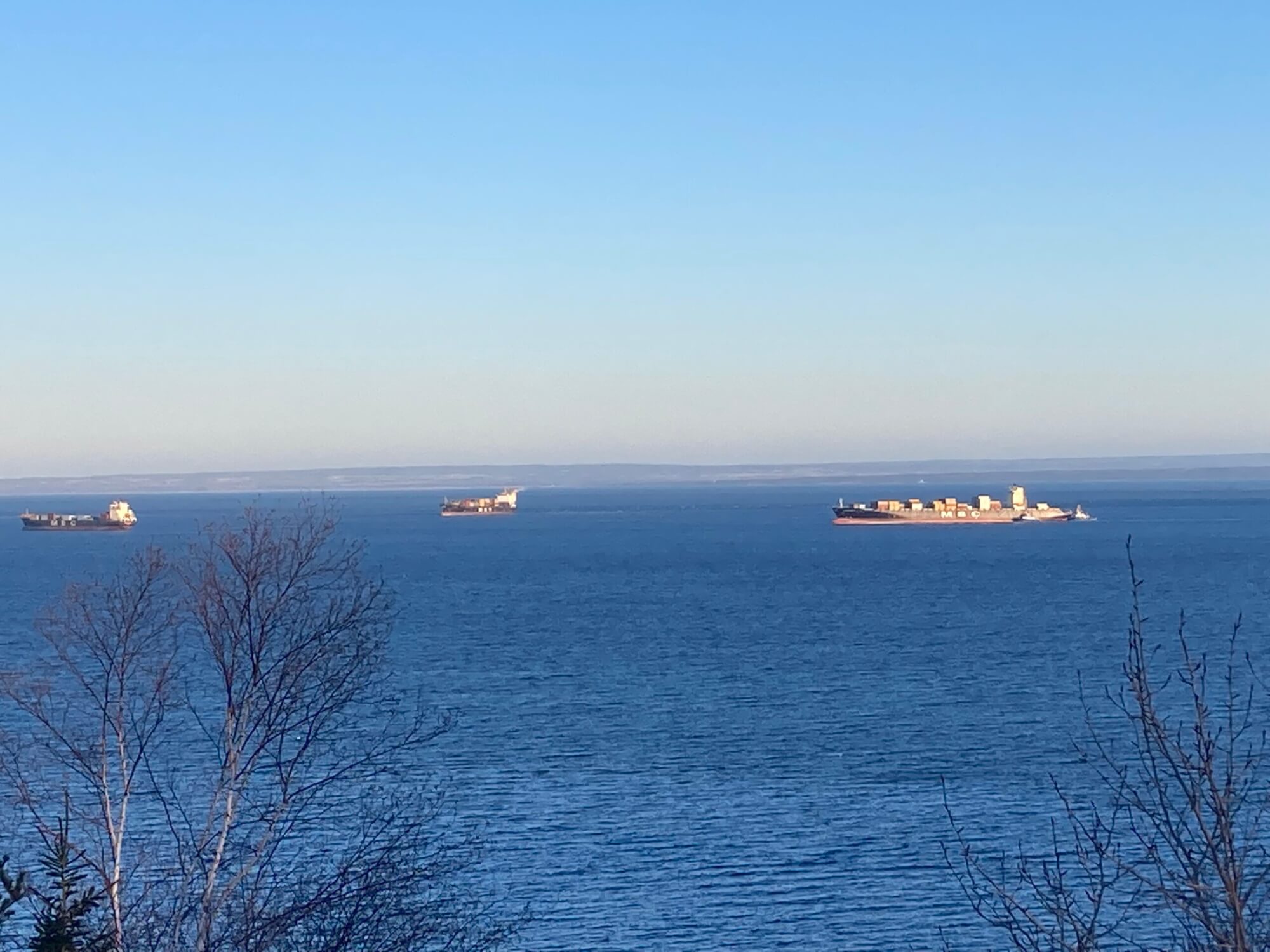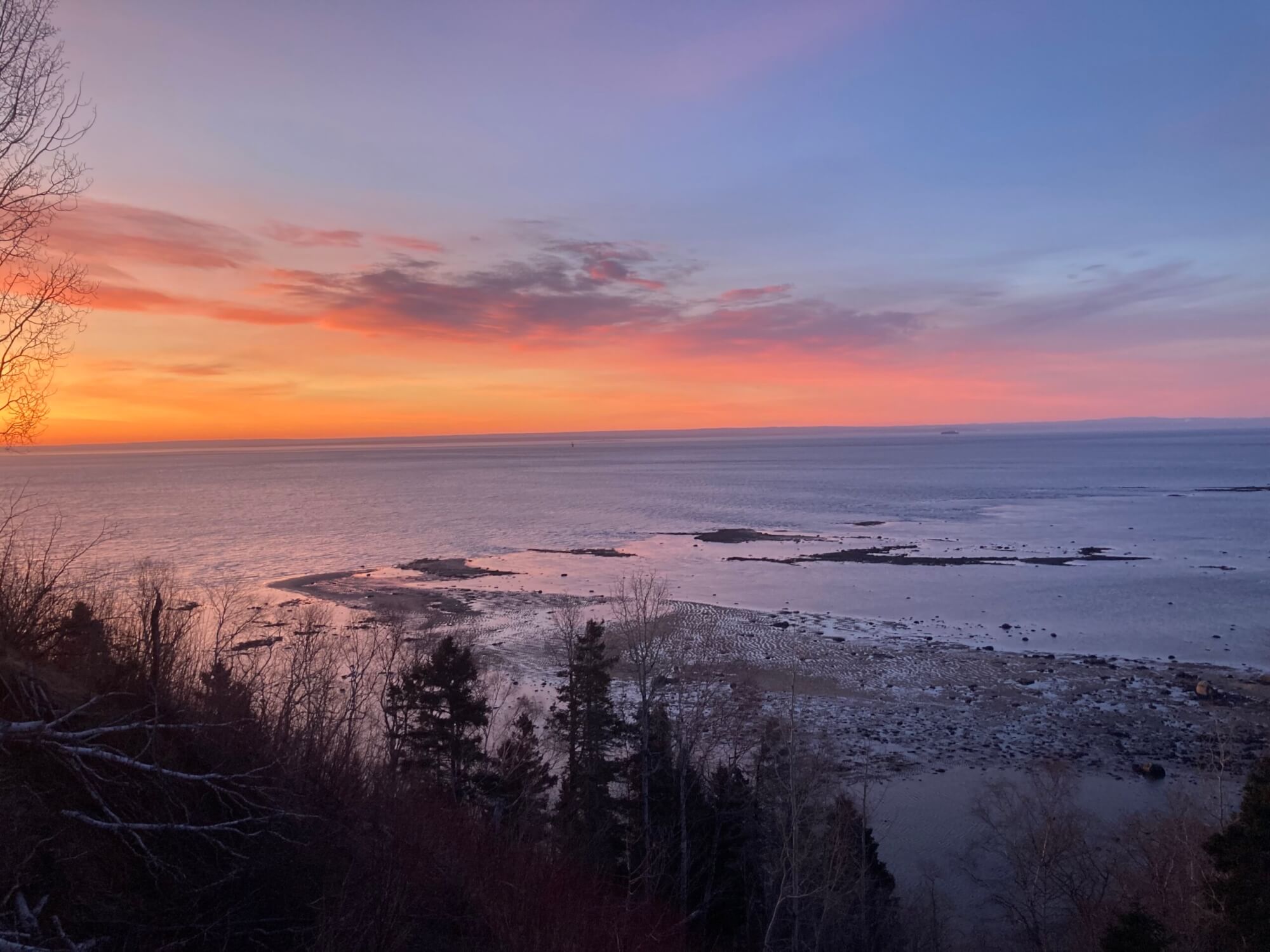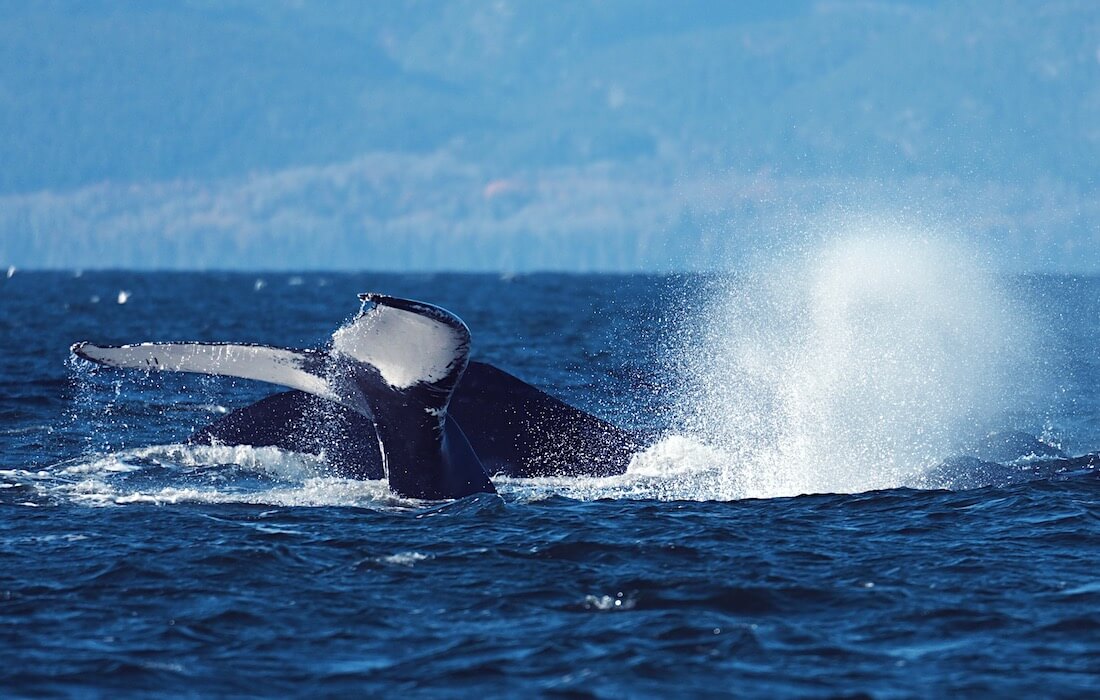7 Short Blasts and 1 Long Blast
“I was woken up by seven short blasts followed by one long one. That’s the ‘abandon ship’ signal!” exclaims my director on the phone early Monday morning, March 4. From his home in Les Grandes-Bergeronnes, he has been observing a cargo ship drift with the tide and currents for an hour. “It nearly ran aground! The Amundsen (Translator’s note: Canadian Coast Guard ship) must’ve given her a little nudge. Now it is opposite Pointe à John.”
I grab my phone and open the Marine Traffic application, a maritime application for satellite-based ship tracking. As it turns out, the MSC Sao Paulo V (referred to by sailors as a “dead ship”) is adrift off the coast of Les Bergeronnes, closely accompanied by a Canadian Coast Guard vessel.
Monday, March 4, 10: 00: The Marine Mammal Emergency Centre of the Quebec Marine Mammal Emergency Response Network (QMMERN) receives the official alert from the National Environmental Emergencies Centre: “Fire on ship MSC SAO PAULO | St. Lawrence River | Les Escoumins, QC.” An uncontrollable blaze is burning in the engine room of the container ship, rendering the vessel inoperable.
The presence of this “dead ship,” a vessel over which all control is lost, is unprecedented in these waters. The crew did not have to evacuate the ship immediately. The “abandon ship” signal heard earlier that morning was used to alert crew members of the situation. The fire raging in the engine room was depriving the ship of its sources of power and electricity.
At QMMERN, our job is to be ready for anything at all times. When we are not handling incidents reported to the emergency line, we are preparing to be able to respond effectively and quickly to any situation that comes our way.
In fact, in late January 2024, QMMERN attended a workshop to coordinate marine mammal response measures to be taken in the context of a maritime pollution incident. The objective was to bring together all regional stakeholders likely to intervene if ever a spill should occur in Quebec waters with a view to developing a response plan for marine mammals.
Who would have thought that one month later (almost to the day), a 294-metre long cargo ship in distress would provide us with the perfect opportunity to put our response plan to the test? Not to mention right in our backyard.
Monday, March 4, 13:22: We receive confirmation that the MSC Sao Paulo V is finally anchored and stabilized off the Tadoussac dunes and that less than 15 metres of water separate the hull of the boat from the seabed.The fire is still ablaze in the engine room and is likely to spread and weaken the structure and integrity of the ship.
There is concern about the possible impact of a grounding on the structure of the ship, which could cause a spill of pollutants in the Saguenay-St. Lawrence Marine Park, i.e. in the heart of critical beluga habitat.
L’Anse du Moulin, a tugboat arriving from Baie-Comeau, attempts to cool the ship’s hull by dousing the scorching metal while the crew of the Sao Paulo V battles the flames on board. There are fears that low tide will drive the container ship into the seabed, cracking the hull and causing disaster. Everyone holds their breath. It’s going to be a long week.
A Canadian Coast Guard command centre was quickly set up at the Tadoussac dunes. Two other cargo ships, the MSC Don Giovanni and the MSC Céline , anchored near the container ship in distress. In support of the MSC Sao Paulo V , they will form an impressive fleet for five days until the cargo ship is towed to Québec City on the night of March 8-9.
Role of QMMERN in the Sao Paulo V incident
Coordination and implementation of a rapid and effective response by the first responders helped avert a major disaster. The work of all federal stakeholders involved is to be commended. But what about QMMERN’s role in managing this type of incident? What about marine mammals?
Although a number of tools and techniques exist to frighten away wildlife in the aftermath of a spill, it remains very difficult to deter marine mammals from approaching or swimming in contaminated waters. In collaboration with its partners, response teams and collaborators, QMMERN sets up a marine mammal monitoring program in connection with the incident. The objective is to evaluate and update the potential risks for marine mammals in the sector as the situation develops.
In addition to providing a portrait of the species usually present in the region of the incident this time of year (belugas and harbour seals), QMMERN collects the latest information, in real time, from its network of observers. From shore, these observers note the appearances and movements of seasonal marine mammals that are quietly returning to the estuary.
A few days prior to the incident, belugas and harp seals were observed in the area and a blue whale was spotted off Cap de Bon- Désir. This information is forwarded to the incident managers (Canadian Coast Guard, Fisheries and Oceans Canada and Environment and Climate Change Canada), who will adapt the intervention plans according to the data collected
Involved twice daily in incident coordination, the QMMERN calls upon its partners to identify the various monitoring options to develop and, if necessary, to implement a marine mammal monitoring plan. Everyone is on high alert: boats are prepared, drone batteries charged and notifications sent to mobilize each resource.
Fortunately, after a week on the alert, the teams involved can finally take a deep breath. The small fleet at the foot of the Tadoussac dunes finally disbands. In anticipation of a winter storm, the MSC Sao Paulo V is towed to Québec City, where it will remain until it is ultimately transported to the port of Halifax once the weather breaks.
Patrick Weldon
Patrick Weldon joined the GREMM team as UMM Supervisor in 2022. He is now responsible for the Quebec Marine Mammal Emergency Response Network (RQUMM). Trained as an anthropologist, it was his strong connection with the ocean that led him to become involved in protecting the marine ecosystem.









